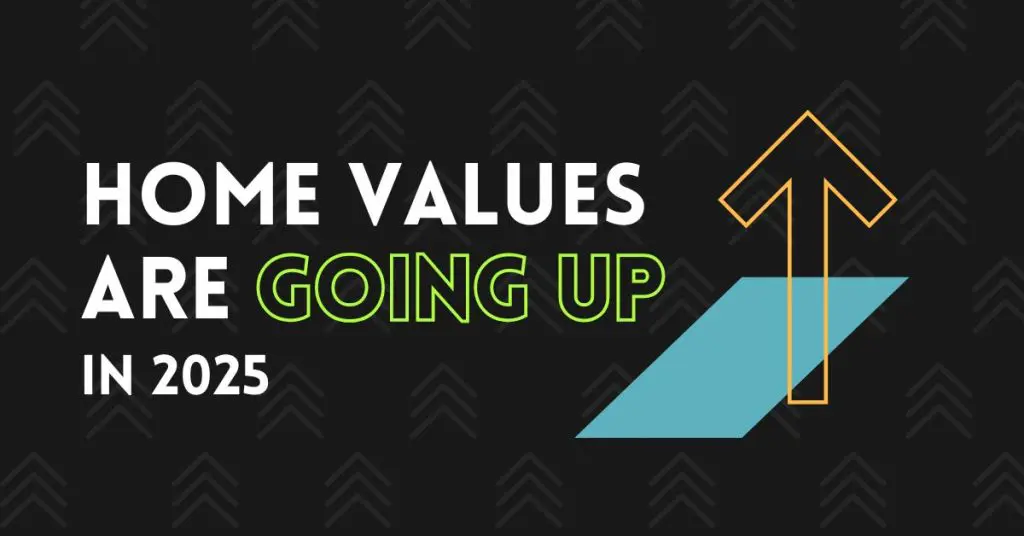Real Estate Market Update - What Mid-Year Indicators Mean for Your Next Move

As we reach the midpoint of 2025, the U.S. housing market stands at a critical juncture. The frenzy of the pandemic-era real estate boom has long since cooled, but in its place we’re seeing a market searching for balance. Higher mortgage rates, cautious buyers, and rising home inventory are combining to reshape what it means to buy or sell a home in today’s climate.
“The housing market is at a turning point,” says Nadia Evangelou, senior economist and director of real estate research at the National Association of Realtors.1 This turning point brings both challenges and opportunities. Whether you’re buying, selling, or just keeping a close eye on the market, understanding these evolving trends is essential.
In this comprehensive market update, we examine four key factors influencing today’s housing market and provide actionable strategies for navigating these evolving conditions.
FEWER HOME SALES, BUT MOMENTUM IS GROWING
While existing home sales have seen a modest uptick compared to last year, overall activity remains well below pre-pandemic norms.2,3 Many potential buyers are still on the sidelines, held back by ongoing economic uncertainty and affordability challenges driven by elevated mortgage rates and home prices.4
Ready to Buy or Sell a Home? Here Are 5 Key Factors in Choosing the Right Agent

Navigating the real estate market without guidance is like starting an expedition without a map. Whether you’re selling your cherished family home or searching for your dream property, having the right real estate agent by your side can make all the difference.
According to a 2024 report from the National Association of Realtors, agent-represented homes sold for a median price of $435,000, compared to just $380,000 for those sold by owners alone.1
Selling Your Home In 2025? Here’s What Buyers Want (And How To Deliver)

Thinking about listing your home in 2025? If so, you’re smart to start planning ahead. With housing inventory rising in many market segments, today’s sellers need more than just a “for sale” sign to stand out.1
The good news? You can still make a strong impression and command top dollar—if you know what today’s buyers are really looking for.
We’ve outlined six of the top homebuyer priorities in 2025, along with a clear action plan to help you position your property for success. Whether you’re weeks or months away from listing, these insights will help you attract serious offers and maximize your return.
5 Roadblocks to Affordable Homeownership And Ways to Move Past Them

Dreaming of a new home but feeling priced out? You’re not alone! According to a recent survey by Bankrate, 78% of aspiring homebuyers cite affordability issues as their primary deterrent.1
According to data from the U.S. Census Bureau, home prices have risen around 32% since the pandemic, and elevated mortgage rates have caused monthly payments to balloon.2

Despite the challenges, homeownership remains a top goal for many Americans. Fortunately, there are ways to turn your dreams of homeownership into reality! In this guide, we’ll explore five common roadblocks to affordable homeownership and actionable solutions to help you overcome them. Let’s break down those barriers so you can finally get the home of your dreams!
The 2025 Real Estate Report
The 2025 Real Estate Report
Experts Predict Home Values to Increase 1.5% to 3.6% in 2025.
Top housing experts and economists give a glimpse of what mortgage rates, home values and the national real estate market will do in 2025.
Key Takeaways
- Mortgages are forecasted to remain higher for longer; but there are things you can do to lower your rate.
- Home values are predicted to increase incrementally on a national level; and there are projects you can do to increase your home’s value.
- The national market will slightly favor sellers in negotiations; however, real estate is driven by local dynamics and may favor either buyers or sellers.
Note: real estate is a dynamic market and forecasts made in this article will change as the year unfolds.
Waiting For Interest Rates To Come Back To The 3s?
Waiting For Interest Rates To Come Back To The 3s?

The Federal Reserve’s recent decision to lower the Federal Funds rate by .50% signaling a shift in easing monetary policy has pundits speculating lower home mortgage rates are on the horizon. Spoiler alert, lower home mortgage rates have declined sharply since July 2024, but before the Fed decision on September 18th. Regardless, many would-be home buyers and home sellers are again paying attention for the right time to jump back into the real estate market. If you are waiting for the rates to drop to around the 3% range before jumping into the real estate market, consider these four points that also come with ultra-low or some would say artificial interest rates:
Stage to Sell: 7 Proven Steps to Attract Buyers and Boost Offers

Selling your home quickly and at the right price takes more than just listing it online. To draw in potential buyers and secure top offers, your home needs to stand out. That’s where home staging comes in. By strategically preparing your home—through redecorating, repairing, and making it look its best—you can make a lasting impression and significantly increase its appeal.
The numbers speak for themselves: according to the National Association of Realtors, 81% of buyers’ agents report that staging makes it easier for potential buyers to envision themselves living in a home. Moreover, 44% of buyers’ and sellers’ agents say that staging can increase a home’s sales price, and 48% of sellers’ agents agree it shortens the time a house spends on the market.1
You can choose to stage your home yourself with advice from your real estate agent or work with a professional stager. Whichever route you take, here are seven essential strategies to transform your home into a buyer’s dream.
7 Mistakes to Avoid When Hiring a Contractor
A recent survey found that more than half (52%) of American homeowners have a renovation project planned this year.1 If you’re among them, you know that embarking on home improvements can be both exciting and daunting. According to the survey, the median renovation budget is around $15,000, so you’re probably investing a significant amount—and you’ll want to ensure your project’s success.1
One of the most critical decisions you’ll make is choosing the right contractor to bring your vision to life. However, many homeowners fall into common pitfalls during this process, leading to stress, financial strain, and subpar results.
In this guide, we’ll explore seven mistakes to avoid when hiring a contractor to ensure your project runs smoothly from start to finish.
7 Weekend Projects to Boost Your Property Value

Whether you’re putting your home on the market in a few weeks or a few years, strategic upgrades can make all the difference. But you don’t have to embark on a major remode
l to make a significant improvement.
Even minor updates can have a big impact on your home’s aesthetic, and certain renovations can even boost its future sale price.
From curb appeal to interior updates, here are seven weekend projects that will enhance your home’s current charm and long-term value.
Mid-Year Market Update for 2024: What Buyers and Sellers Need to Know
Last December, when the Federal Reserve projected a series of benchmark rate cuts in the coming year, some analysts speculated that mortgage rates—which had recently peaked near 8%—would fall closer to 6% by mid-2024.1,2,3 Unfortunately, persistent inflation has delayed the central bank’s timeline and kept the average 30-year mortgage rate hovering around 7% so far this year.2
While elevated mortgage rates have continued to dampen the pace of home sales and affordability, there have been some positive developments for frustrated homebuyers. Nationwide, the inventory shortage is starting to ease, and an uptick in starter homes coming on the market has helped to slow the median home price growth rate, presenting some relief to cash-strapped buyers.4
There are also signs that sellers are adjusting to the higher rate environment, as a growing number list their properties for sale.4 Still, economists say a persistent housing deficit—combined with tighter lending standards and historically high levels of home equity—will help keep the market stable.5
What does that mean for you? Read on for our take on this year’s most important real estate news and get a sneak peek into what analysts predict is around the corner for 2024.


